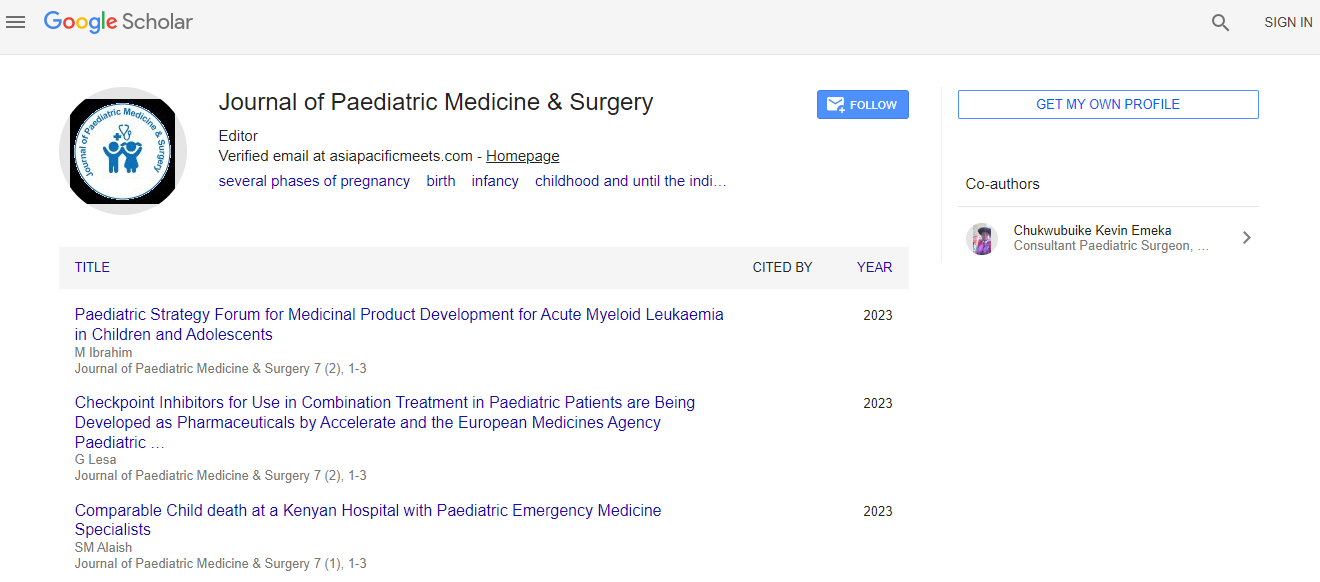Pediatrics & Neonatal Healthcare 2017: Autism from the beginning: Early screening and detection and the search for biomarkers - Karen Pierce - University of California
*Corresponding Author:
Copyright: © 2017 . This is an open-access article distributed under the terms of the Creative Commons Attribution License, which permits unrestricted use, distribution, and reproduction in any medium, provided the original author and source are credited.
Abstract
Autism Spectrum Disorder (ASD) has advanced tremendously across the past decade, with a growing appreciation of its probable prenatal origins and wide-ranging biological features. Still it remains behaviourally identified and diagnosed with the mean of detection in America after around age of 3-4 years. Foremost 3 years of life are the most primary transformative period for human postnatal brain development. Such a late age of ASD detection and subsequent treatment (that is most often after age 3 years) has implications not only for the long-term outcome of the child, but it is for the ability of scientists to discover early biomarkers of ASD. This will describe efforts to detect ASD in the normal population around the 1st birthday via the use of a new approach–the Get S E T Early Model - that hinges on paediatrician engagement in the early detection process.
Autism spectrum disorder (ASD) refers to a highly complex family of conditions defined by early-onset impairments in social interaction and social communication, accompanied by a wide range of behaviour rigidities, with lifetime consequences for language and learning skills, independent-living skills, and, potentially, the presence of severe behaviour challenges. It is one of the most highly heritable of all complex neuropsychiatric conditions, but no single molecular marker defines its diagnosis. Instead, current estimates suggest that hundreds of genetic and genomic disorders - the majority of which are still unknown - may play a role in Etiology, including rare and common variant. No single gene has yet been associated with more than a fraction of patient cases (<1%), and the extent to which any pattern or patterns of gene variants or expression can reliably indicate risk of the condition remains unclear. There are numerous hoped-for future insights into the developmental neurobiology of ASD, but the condition is still diagnosed behaviourally by the presence of its defining characteristics, through direct behavioural examination and historical information. There is, however, vast phenotypic heterogeneity, spanning the entire range of IQ and language function, with variable profiles of strengths and deficits as well as symptom characteristics; change over time; and comorbidities with common psychiatric conditions (e.g., anxiety, mood, and attention disorders). The most robust clinical features for early diagnosis of autism include reduced interaction with and attention to others, reduced attention to others’ eyes, failure to respond to the calling of one’s own name, and inability to join in imitative games and reciprocal vocalizations. These indicators are all failures in normative skills that represent milestones in the development of social interaction and social communication skills. Such failures, in turn, become causative factors in subsequent atypical developmental trajectories and in the emergence of more severe symptomatology.
Given these multiple layers of complexity, there has been great interest and investment in the identification of biological markers (or biomarkers) for ASD, with the hope of identifying more homogeneous groups for biological study, of aiding in diagnosis (including early detection prior to the emergence or exacerbation of symptoms), and of developing more robust and sensitive markers for individualization of treatment and for measurement of treatment response. This effort is not distinct from the search for biomarkers in other neuropsychiatric conditions, in which there is an emerging consensus that clinical phenomenology, although still the primary means for classifying individuals into diagnostic categories, does not capture biologically meaningful differentiations. The author will present data on the diagnostic stability of ASD starting at 12 months and will explore the phenotypic overlap of ASD and other early delays during early development. The presentation will also describe how ASD toddlers detected via the Get SET Early Model have been essential in making new discoveries of early biomarkers in the areas of eye tracking and functional brain imaging. For example, most recently the author has created an eye tracking test, the GeoPref Test for Autism, which identifies a subset of ASD toddlers based on unusual visual attention patterns with 98% specificity. ASD toddlers that display the most severe eye gaze patterns as indexed through eye tracking also show highly unusual patterns of brain connectivity. Disentangling heterogeneity through eye tracking, brain imaging and other approaches is foundational in making a significant progress towards the goal of precision medicine for ASD and will be a key focus of the presentation.

 Spanish
Spanish  Chinese
Chinese  Russian
Russian  German
German  French
French  Japanese
Japanese  Portuguese
Portuguese  Hindi
Hindi 